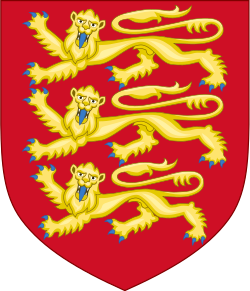
Back Unitêre owerhede van Engeland Afrikaans Унітарныя адзінкі Англіі Byelorussian دەسەڵاتە یەکگرتووەکانی ئینگلتەرا CKB Awdurdodau unedol yn Lloegr Welsh Tervikomavalitsus (Inglismaa) Estonian Autorité unitaire (Angleterre) French Engleske unitarne uprave Croatian Autorità unitarie dell'Inghilterra Italian イングランドの単一自治体 Japanese 잉글랜드의 단일 자치구 Korean
| Unitary authority area | |
|---|---|
 | |
| Category | Local authority districts |
| Location | England |
| Found in | Regions |
| Number | 62 (as of 2023) |
| Possible types |
|
| Possible status | |
| Populations | 40,000–600,000 |
| This article is part of a series within the Politics of the United Kingdom on the |
 |
|---|
In England, a unitary authority or unitary council[1][2] is a type of local authority responsible for all local government services in an area. They combine the functions of a non-metropolitan county council and a non-metropolitan district council, which elsewhere in England provide two tiers of local government.
The district that is governed by a unitary authority is commonly referred to as a unitary authority area[3][4] or unitary area.[2][5] The terms unitary district and, for those which are coterminous with a county, unitary county are also sometimes used.[6][7][8][9] The term unitary authority is also sometimes used to refer to the area governed, such as in the ISO 3166-2:GB standard defining a taxonomy for subdivisions of the UK,[10] and in colloquial usage.[11][12][13][14]
Unitary authorities are constituted under the Local Government Act 1992, which amended the Local Government Act 1972 to allow the existence of non-metropolitan counties that do not have multiple districts. Most were established during the 1990s, with more created in 2009 and 2019–23. The size of the areas governed by unitary authorities varies greatly; the authorities created in the 1990s were generally created from single districts and covered a single large town or city, while those created since 2009 often cover entire non-metropolitan counties.
In addition to the authorities created under the 1992 act, the term unitary authority has also been used in a broader sense that is inclusive of all single-tier councils, such as those for London boroughs and metropolitan boroughs.[15][11]
- ^ Sandford, Mark (24 November 2020). "Unitary local government: An explainer". House of Commons Library.
- ^ a b "How is local government organised? | Local Government Association". www.local.gov.uk.
- ^ "The Land Charges (Amendment) Rules 2012". www.legislation.gov.uk.
- ^ "Power to the People – Your guide to local councils, the benefits they can bring to your area and how you can create one" (PDF). NALC. 2010.
- ^ "The Local Government (Structural Changes) (General) (Amendment) Regulations 2018".
- ^ "Gazetteer of British Place Names". gazetteer.org.uk.
- ^ "The Local Authorities (Goods and Services) (Public Bodies) (Trunk Roads) (No. 2) Order 1996".
- ^ "Levelling-up and Regeneration Act 2023 c. 55 Part 2 Chapter 1".
- ^ "Oxfordshire County Council Strategic Financial Case for a Unitary Council" (PDF). Ernst & Young.
- ^ "Standard: ISO 3166 — Codes for the representation of names of countries and their subdivisions". www.iso.org.
- ^ a b "House of Commons Standing Committee A (pt 11)". publications.parliament.uk.
I live in a unitary authority—a London borough—and if I were given the choice, I, personally, would vote to move to a unitary authority.
- ^ "Courts and Tribunal Services (England and Wales) - Hansard - UK Parliament". hansard.parliament.uk. 19 January 2025.
...not a single court will remain in the unitary authority of North Lincolnshire
- ^ "Eton College forced to close after Thames Water sewers which serve area around prestigious school flood". Sky News.
The delayed start of term at the school in the unitary authority of Windsor and Maidenhead, in the ceremonial county of Berkshire
- ^ Wild, Rose (9 February 2024). "Sophisticated was an insult — and then it flipped". www.thetimes.com.
Swansea used to be in a county called 'west Glamorgan' but this hasn't existed since 1996 when the old counties were replaced by 22 unitary authorities. Swansea is currently in the unitary authority of 'Swansea'.
- ^ Sandford, Mark. "Unitary local government" (PDF). House of Commons Library.
© MMXXIII Rich X Search. We shall prevail. All rights reserved. Rich X Search